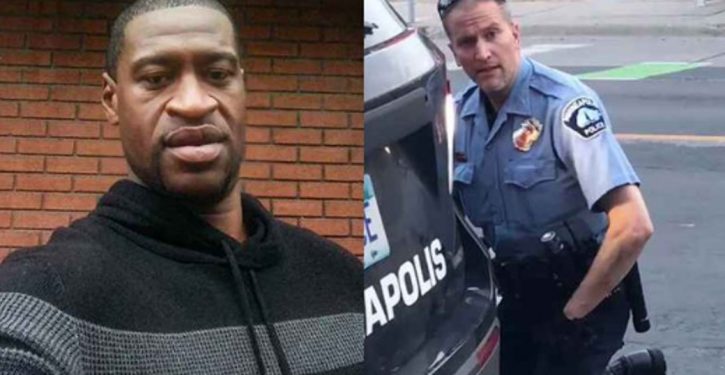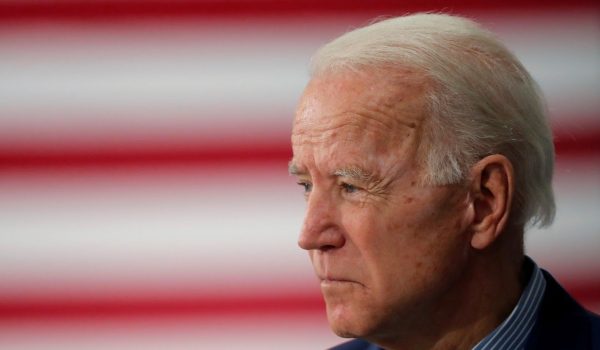
A high-school teacher in Arlington, Va., is under investigation, and has been “relieved of classroom duties” after posting a chemistry question that referred to the killing of George Floyd by Minneapolis police. “George Floyd couldn’t breathe because a police officer put his _____ George’s neck,” the question read. The answer is “neon,” an element that sounds like “knee on.”
If the teacher is fired from his position, that will violate his constitutional rights because teachers weren’t on notice that such classroom references to killings were forbidden. While school districts are entitled to control what students are taught, they can’t punish instructors for classroom speech without first making clear that it’s prohibited. If “people of common intelligence” wouldn’t have known that such references were forbidden, then punishing an instructor for them “violates due process,” as judges explained in Bradley v. University of Pittsburgh (1990).
For example, an appeals court overturned the discipline of a professor for classroom lectures deemed sexually insensitive, because he wasn’t on notice that his remarks — which weren’t aimed at any particular student — would be deemed to fall within the “nebulous outer reaches” of his college’s sexual harassment policy. (Cohen v. San Bernardino Valley College (1996)).
Will this presidential election be the most important in American history?
As Arlington Now reports:
A fill-in-the-blank question during a science class at H-B Woodlawn has caused an uproar.
The chemistry question, asked Tuesday during what ARLnow is told was a 10th grade class, references the police killing of George Floyd.
“George Floyd couldn’t breathe because a police officer put his _____ George’s neck,” the question reads. The answer is “neon,” the element that sounds like “knee on.”
Classes are currently being held virtually at Arlington public schools. Shortly after the class, a screenshot of the question started circulating on social media, and parents started calling the school….In a letter to parents today, H-B’s principal said the secondary program — once known as “Hippie High” for its liberal approach to education — “does not tolerate any form of cultural or racial insensitivity.”
“We will be meeting directly with the students in the class, and will work with all of our H-B Woodlawn students to process the incident,” the letter goes on to say. “Our Student Services Team will be available for individual counseling and students can reach out directly to me as well….The H-B Woodlawn community does not tolerate any form of cultural or racial insensitivity. We prioritize making H-B Woodlawn a safe and inclusive space for all students, staff, and parents. Yesterday an incident occurred that conflicts with our core values of respect, trust, social justice, and diversity….Our Student Services Team will be available for individual counseling (emails below) and students can reach out directly to me as well….We will continue to update the community on the steps we are taking both in the short-term and long-term.”
In a mass email today to Arlington parents like me, the school superintendent stated:
On Tuesday, as part of a class exercise, an H-B Woodlawn teacher shared an example with students that showed significant racial insensitivity. The content referenced the killing of George Floyd in an unacceptable and senseless way, which hurt and alarmed our students, staff, families, and the community. The reference showed extremely poor judgement and a blatant disregard for African American lives.
This act violates the core values of the school system and reinforces the importance of the work we have been doing, and must continue to do, to employ culturally responsive teaching practices and to combat systemic racism. The teacher has been relieved of classroom duties while an investigation related to this matter takes place. I want to assure everyone that this situation will be handled in accordance with our policies, and all staff are held to the highest standards of professional behavior….
While we have made major progress to improve our policies and programs, we know we have more work to do. We are incorporating frameworks like No Place for Hate this year to reinforce that Arlington Public Schools is a safe learning community and to empower our staff and students to take a stand against bias and bullying.
This is an overreaction. While the teacher’s reference to the killing of George Floyd was tone-deaf, it was not an instance of bullying, nor did it endanger students’ safety, show a disregard for the sanctity of human life, or engage in racial discrimination.
Many teachers have referred to famous killings in classroom examples or exam questions. Referring to such killings does not show bias, even if the killing is of a member of a particular race or sex (as killings usually are). When I was in college and law school, instructors used examples involving serial killer Ted Bundy. Bundy, a misoygnist, killed 30 women, targeting them in part based on their sex. But citing Bundy in class didn’t make my professors sexist, anymore than citing George Floyd’s killing made the Arlington teacher a racist.
Floyd’s wrongful killing also doesn’t seem to be an example of “systemic racism,” as opposed to simple brutality. Prosecutors have never charged the police who killed Floyd with a hate crime, or with murdering him because of his race. Floyd’s death was similar to police killings of white victims like Tony Timpa, who died after 14 minutes of struggling to breathe. Police killings usually occur for reasons unrelated to race, and many victims are white.
So the Superintendent was jumping to conclusions when he asserted that using George Floyd in this example showed a “blatant disregard for African American lives,” and suggested that it reinforced “systemic racism.”
The teacher’s citing George Floyd’s killing was not racial discrimination, even if it was ill-advised. He did not aim it at black students, which makes it harder to claim it was racial harassment. (See Rodriguez v. Maricopa Community College District (2010)). More importantly, it was not remotely as offensive as racist remarks that courts have found not severe enough to constitute racial harassment. (See, e.g., Witt v. Roadway Express (1998); Bolden v. PRC (1995)).
So it doesn’t constitute discriminatory harassment. Trying to stretch the school system’s existing policies against harassment or discrimination to cover speech this mild would render those policies overbroad and vague, and would lead to them being struck down as a violation of free speech. (See, e.g., Saxe v. State College Area School District (2001)).
Nor did the teacher violate school policies against violence or bullying. Merely referring to violence (like the death of George Floyd) isn’t itself violence, and thus can’t be banned under rules against violence or bullying. For example, in Bauer v. Sampson, a federal appeals court ruled that a campus newspaper’s depiction of a college official’s imaginary death was protected by the First Amendment, even though the college declared it a violation of its policy against “workplace violence.”
Nor was the teacher’s speech bad enough to be considered legally disruptive, just because it annoyed some students and parents. For example, a court ruled that a public employee could not be fired for moonlighting as a blackface entertainer in Berger v. Battaglia (1985). The employee’s speech wasn’t considered disruptive, despite the fact that it offended many black people. That ruling was by the Fourth Circuit Court of Appeals, which has jurisdiction over the Arlington schools.
So the teacher would not have been on notice that school rules against disruptive behavior would forbid him from using George Floyd in an example.




